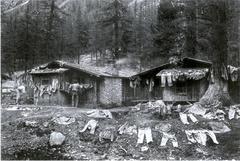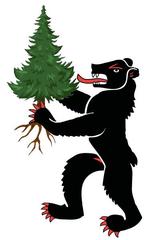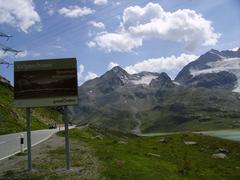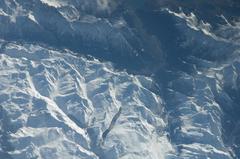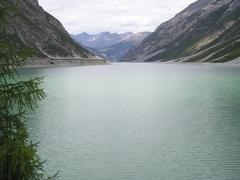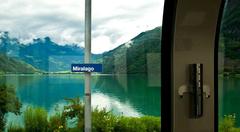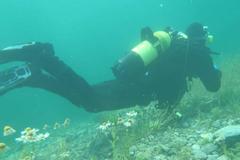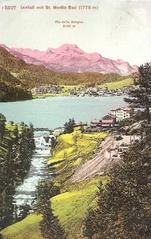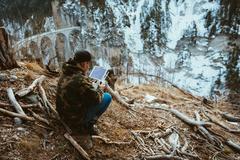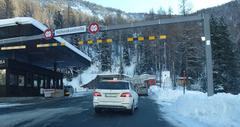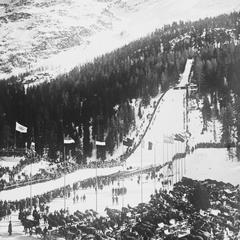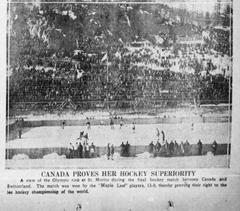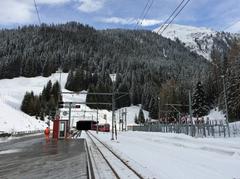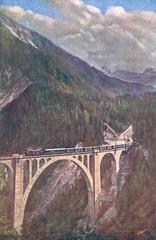
Lake Davos Visiting Hours, Tickets, and Travel Guide for Canton of the Grisons, Switzerland
Date: 04/07/2025
Introduction to Lake Davos: Alpine Beauty and Cultural Heritage
Lake Davos (Davosersee) is a glacial lake situated at around 1,560 meters above sea level in the stunning Landwasser Valley, within the Canton of the Grisons (Graubünden), Switzerland. This scenic lake, framed by the Rhaetian Alps, stands out for its pristine waters, year-round recreational opportunities, and rich historical backdrop. Lake Davos has evolved from a site of prehistoric settlements to a celebrated health resort and a modern winter sports hub, reflecting the dynamic cultural tapestry of the surrounding region (bein-numismatics.ch; davos.ch).
With a surface area of approximately 0.59 km², Lake Davos is one of Switzerland’s most notable alpine lakes. Its basin, the result of a major historical landslide, contributes significantly to local hydrology and renewable energy as a hydropower reservoir (discoverwalks.com). The subarctic alpine climate ensures distinctive seasonal experiences, from vibrant summer activities to enchanting winter landscapes.
Lake Davos is accessible year-round, offering free entry and a variety of activities suitable for all ages and abilities. The surrounding region is renowned for its linguistic diversity—German, Romansh, and Italian cultures converge here, enriching every visitor’s experience. The nearby town of Davos, home to the annual World Economic Forum, further enhances the area’s global appeal (gr.ch; switzerlanding.com).
This guide provides essential information on visiting hours, ticketing, accessibility, activities, travel tips, and sustainability to help you make the most of your time at Lake Davos.
Table of Contents
- Introduction
- Historical Context
- Visiting Hours, Tickets, and Accessibility
- Attractions and Activities
- Geographical and Environmental Significance
- Visitor Facilities and Sustainable Tourism
- Cultural Significance
- Key Historical Milestones
- Frequently Asked Questions
- Plan Your Visit and Stay Connected
- Practical Essentials
- Safety and Etiquette
- Local Culture and Customs
- Connectivity and Digital Resources
- Health and Emergency
- Insider Tips
- Conclusion
- References
Historical Context of Lake Davos and the Grisons Region
Early Settlement and Regional Roots
Archaeological evidence traces human habitation in the Lake Davos area to the Raetians, an ancient Alpine people, who settled here during the Neolithic Pfyn culture (3900–3500 BCE) (bein-numismatics.ch). The region later became a part of the Roman province of Raetia, with Chur (Curia) serving as a significant administrative center.
Medieval Confederations and the Rise of Davos
In the Middle Ages, the Grisons region was shaped by three confederations—the League of God’s House, the Grey League, and the League of the Ten Jurisdictions—which united in 1450 to form the Free State of the Three Confederations (bein-numismatics.ch). This fostered a spirit of local self-governance and regional cooperation.
Davos itself was founded in the 13th century by migrants from Upper Valais (switzerlanding.com). Its transformation began in the mid-19th century, when the arrival of tuberculosis patients and the construction of sanatoriums established Davos as a leading health resort (davos.ch).
Visiting Lake Davos: Hours, Tickets, and Accessibility
Visiting Hours
Lake Davos and its surrounding areas are open year-round. The natural site is accessible from dawn to dusk, typically from 6:00 AM to 10:00 PM depending on the season. While access to the lake is always free, facilities such as boat rentals, bathing areas, and ice rinks have seasonal opening hours—generally from 8:00 AM to 8:00 PM in summer.
Tickets and Fees
- Lake Access: Free of charge.
- Facilities: Some services (boat rentals, ice rinks, guided tours) require a fee or reservation.
- Special Events: Events like the Spengler Cup may have ticket requirements (davos.ch).
Accessibility
Lake Davos is equipped with paved, wheelchair-friendly trails. Parking is available but limited during peak times. For the best accessibility information, consult the official Davos tourism website.
Attractions and Activities Around Lake Davos
Year-Round Recreation
- Summer: Swimming (in monitored zones), sailing, windsurfing, stand-up paddleboarding, kayaking, fishing (permit required), hiking, and cycling.
- Winter: Ice skating, curling, cross-country skiing, snowshoeing, and winter walks when the lake freezes.
Scenic Trails and Family Fun
- Lakeside Trail: A gentle 1.5-2 hour walk suitable for families.
- Mountain Hikes: Trails to the Wolfgang Pass and Flüela Valley for more experienced adventurers.
- Family Facilities: Playgrounds, safe swimming areas, and accessible promenades.
Cultural and Historical Sites
- Kirchner Museum: Showcasing works by artist Ernst Ludwig Kirchner.
- Davos History Museum: Exploring the town’s evolution as a health resort.
- St. Johann Church: An architectural landmark in Davos Platz.
- Schatzalp: A historic sanatorium and hotel with panoramic views.
Special Events
- Spengler Cup: International ice hockey tournament held each December.
- Seasonal Festivals: Open-air concerts, sporting events, and local markets.
Geographical and Environmental Significance
Physical Features
Lake Davos covers 0.59 km² and reaches a depth of 54 meters. Its shoreline stretches 3.8 km, surrounded by alpine meadows and forests (swissglorious.com).
Geological and Hydrological Importance
The lake basin was formed by a Parsenn landslide, later filled by glacier meltwater and mountain streams (discoverwalks.com). It supports hydropower generation and downstream water regulation.
Climate and Ecology
Davos has a subarctic alpine climate: summers are mild (10–20°C), with lake temperatures peaking at 18–20°C in August. Winters are snowy, supporting cross-country skiing and ice sports. The lake and forests are home to diverse flora and fauna, including waterfowl, trout, deer, and marmots.
Sustainability
Local authorities enforce strict environmental management—designated picnic areas, eco-friendly activities, and responsible tourism practices preserve the alpine ecosystem (discoverwalks.com).
Visitor Facilities and Sustainable Tourism
- Restrooms and Changing Rooms: Available at key points around the lake.
- Kiosks and Cafés: Serving snacks, drinks, and Swiss specialties.
- Equipment Rentals: Water sports, bicycles (including adaptive options).
- Picnic and Barbecue Areas: Some with wheelchair-accessible tables.
- Lifeguards: On duty at designated swimming areas in summer.
- Public Transport Links: Frequent buses from Davos Dorf and Davos Platz.
- Digital Resources: Free Wi-Fi in public areas, Davos Klosters Buddy app for maps and tips.
Cultural Significance
The area around Lake Davos is a crossroads of German, Romansh, and Italian cultures, reflected in local customs, cuisine, and language (gr.ch). Davos’s reputation as a health resort and winter sports pioneer is complemented by its role as host to the World Economic Forum (switzerlanding.com).
Key Historical Milestones
- 13th Century: Foundation of Davos by Upper Valais settlers.
- 1865: Davos becomes a health tourism destination.
- 1869: Construction of the first artificial ice rink.
- 1921: Davos Ice Hockey Club founded, Spengler Cup initiated.
- 1931/32: Parsenn cable car opens, sparking alpine ski tourism.
- 1971: Davos begins hosting the World Economic Forum.
Frequently Asked Questions (FAQ)
Q: What are the visiting hours for Lake Davos?
A: The lake is accessible from dawn to dusk year-round. Facilities typically open 8:00 AM–8:00 PM in summer.
Q: Is there an entry fee?
A: No, access is free. Fees apply for rentals, guided tours, and some facilities.
Q: How do I get to Lake Davos?
A: By train (Davos Dorf station), bus (local PostAuto routes), car (limited parking), or via hiking/biking trails (Davos Klosters Activities).
Q: Are pets allowed?
A: Yes, but keep dogs leashed, especially near wildlife and busy areas.
Q: Is the area accessible for wheelchairs?
A: Yes, main paths and some picnic areas are wheelchair-friendly.
Plan Your Visit and Stay Connected
- For up-to-date information, download the Davos Klosters Buddy app.
- Check the official Davos Tourism website for seasonal hours, events, and accessibility.
- Follow Davos on social media for live updates and inspiration.
- For virtual tours and maps, visit Davos Interactive Map.
Practical Essentials
- Clothing: Bring swimwear and sun protection in summer, layers for cool evenings, and winter gear for colder months (The World Pursuit).
- Footwear: Sturdy walking shoes or hiking boots.
- Water Bottle: Swiss tap water is safe and readily available.
- Picnic Supplies: Stock up in Davos Dorf or Platz.
- Budgeting: Most activities are free; expect CHF 10–30/hour for rentals. Dining out is pricey—consider picnics or snacks from supermarkets.
Safety and Etiquette
- Swim only in designated areas.
- Use sunscreen; the alpine sun is intense.
- Respect wildlife and stay on marked trails.
- Keep noise to a minimum, especially mornings and evenings.
- Clean up after pets and use recycling bins.
Local Culture and Customs
- Main language is German; English is common in tourist areas.
- Punctuality is valued—arrive early for public transport and tours.
- Tipping is not required but rounding up is appreciated (The World Pursuit).
Connectivity and Digital Resources
- Free Wi-Fi in public areas and many cafés.
- Use the Davos Klosters Buddy app for tips, offline maps, and local offers.
- Check weather forecasts before your visit.
Health and Emergency
- Davos offers a hospital and pharmacies.
- In an emergency: 144 (medical), 117 (police), 118 (fire).
Insider Tips
- Arrive early for tranquil lake views.
- Sunset offers stunning mountain reflections—ideal for photographers.
- Try Swiss dishes like fondue or raclette in Davos restaurants (The World Pursuit).
- Look out for traditional alphorn performances.
Conclusion
Lake Davos is a premier alpine destination—blending natural splendor, historical intrigue, and diverse recreation. With free, year-round access, exceptional facilities, and a commitment to sustainability, it welcomes all travelers to experience the heart of the Swiss Alps. Plan ahead using official resources, and immerse yourself in the unique blend of adventure, relaxation, and culture that defines Lake Davos.
References and Further Reading
- Graubünden (Grisons) History – Bein Numismatics
- Davos the Pioneer – Davos Official Tourism
- Top 10 Outstanding Facts About Lake Davos – Discover Walks
- Overview of Grisons – Graubünden Canton Official
- Things to Do in Davos – Switzerlanding
- Water Sports at Lake Davos – Davos Official Tourism
- Davos Klosters Activities
- Swiss Glorious – Davos Overview
- The World Pursuit – Switzerland Travel Tips
Visuals:
- Use high-quality images of Lake Davos in all seasons with descriptive alt tags like “Lake Davos visiting hours scenic view,” “Lake Davos ice skating,” and “Kirchner Museum Davos historical site.”
- Add maps and virtual tours where possible to enhance engagement and accessibility.















